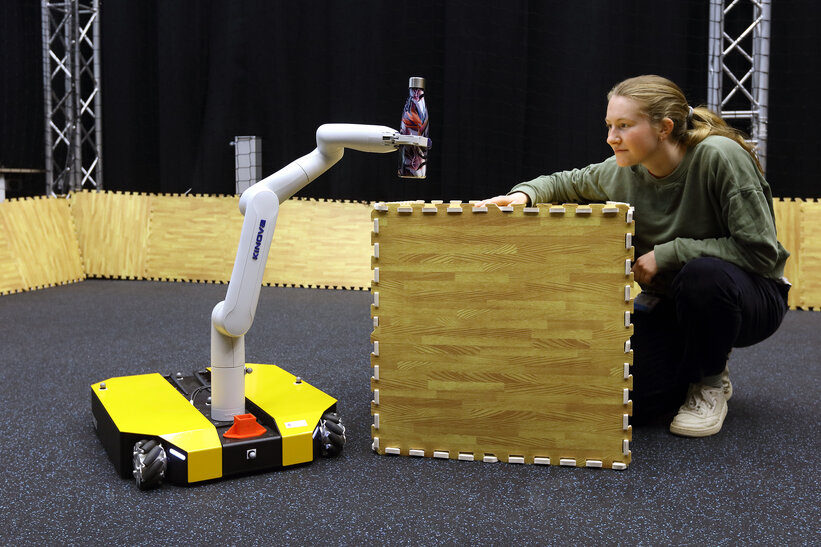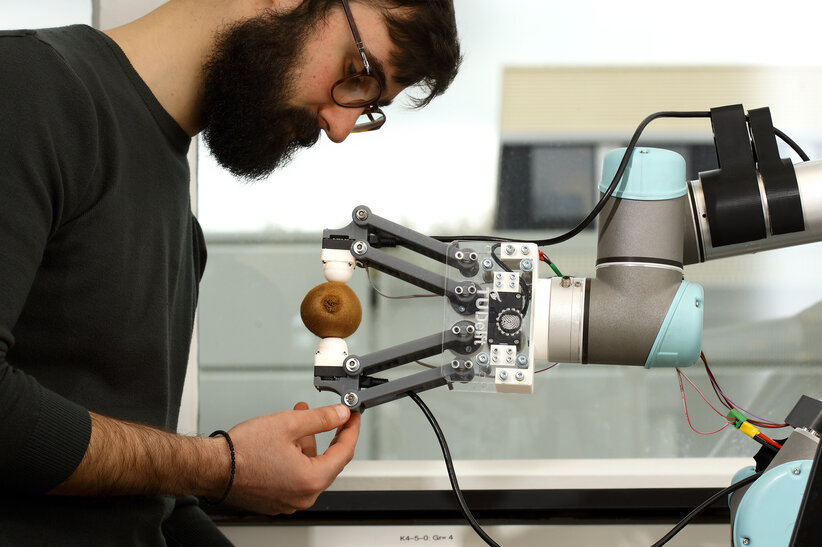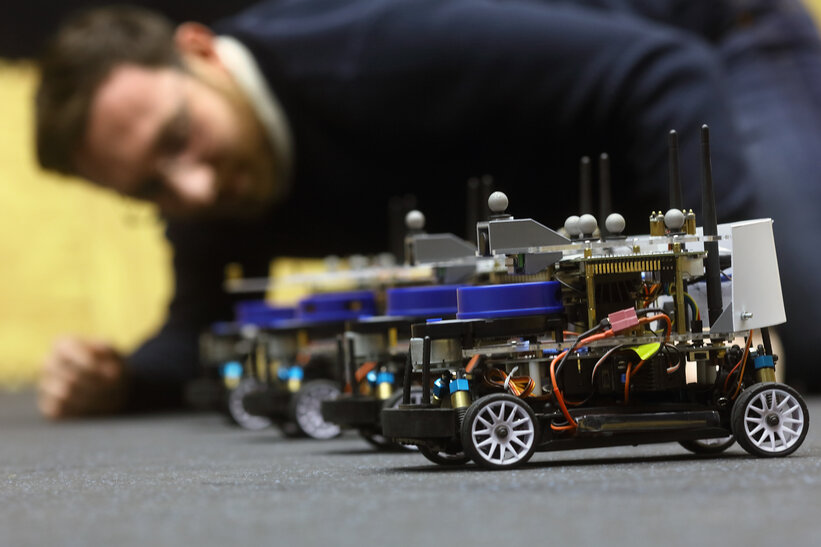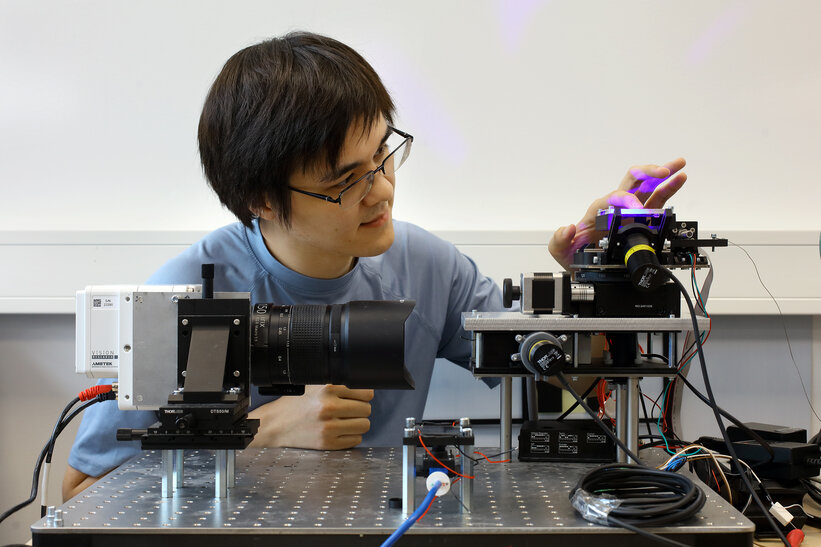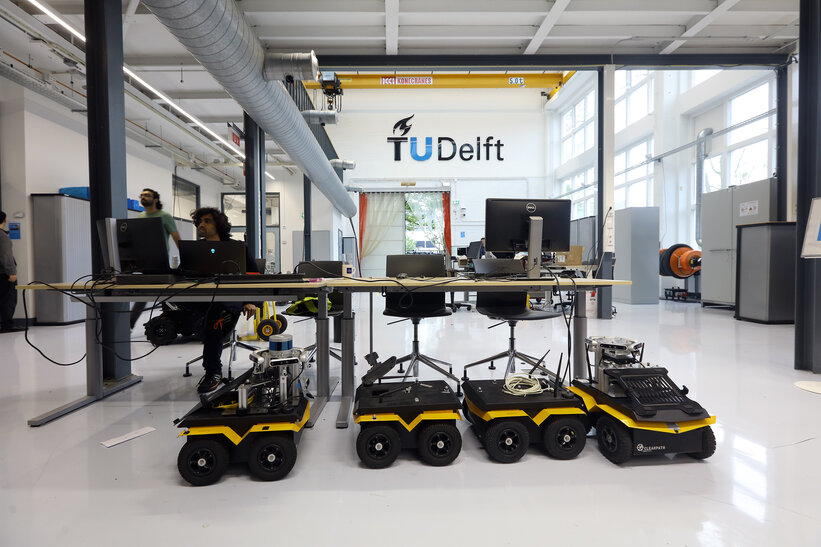TU Delft Mechanical Engineering opens new robotics lab
From robots that stock shelves to aid during post-stroke rehabilitation, and from autonomous drones to self-driving cars. All these and more robots can now be found under one roof at TU Delft. On 17 April, the Cognitive Robotics department will open its brand-new lab where not only robots, but also researchers and technicians will come together. This should encourage cross-pollination of knowledge and creative solutions and take research into robotics to the next level.
The new lab covers around 1,000 m2, making it one of the largest robotics labs in Europe, department chair Hans Hellendoorn dares to say. The Cognitive Robotics department was created about seven years ago by bringing together people from different departments within the faculty of Mechanical Engineering. For a long time, there was no space to physically bring these people together. But after a substantial renovation, this has now changed. The new lab provides space for all research groups to code, test and improve their robots and research setups. "It's now quite simple to glance into each other's labs and gather insights. We are already witnessing the benefits of this," Hellendoorn says.
Collaboration with robots
Cognitive Robotics develops robots, including intelligent vehicles, that can function in complex environments, for example, those shared with humans or animals. "We see robots taking an increasingly prominent place in society. Robots are leaving their enclosures and are expected to perform tasks in collaboration with humans. But how do we do that in a proper and safe way? That's where our interest and expertise lies," says Hellendoorn. The researchers are working within different application areas, from agriculture to traffic and from hospitals to security.
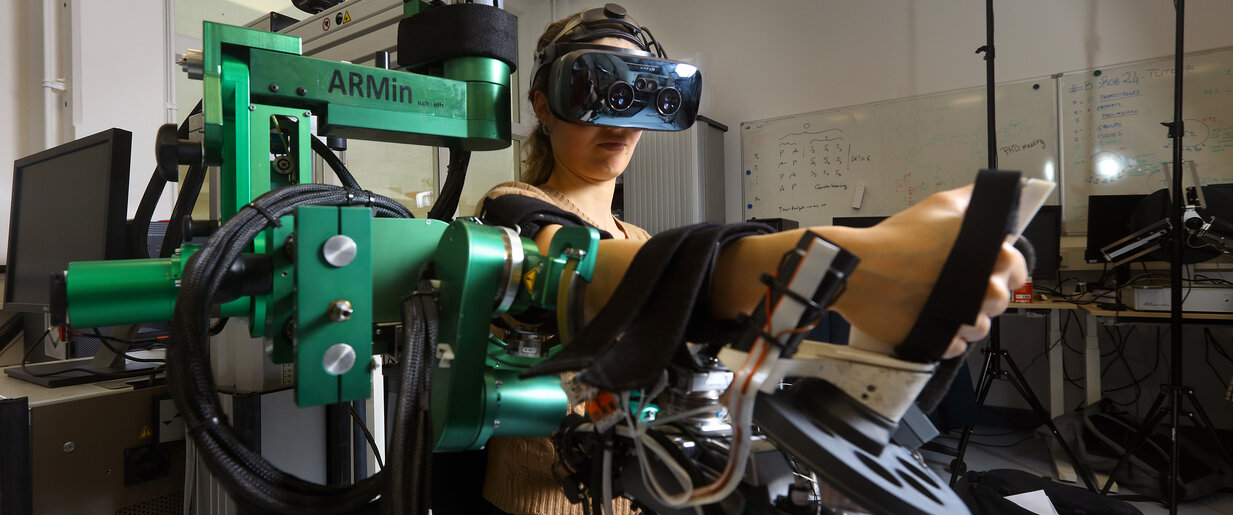
Rehabilitation robots
For example, using robots in combination with virtual reality in post-stroke patient rehabilitation is promising, but still feels artificial for the patients and is therefore ineffective. Associate professor Laura Marchal-Crespo is working on refining rehabilitation robots to better meet patients' needs and optimise treatment outcomes. "Among other things, we are looking at how best to personalise therapies, for which we combine machine learning techniques with the expertise of physiotherapists in a hybrid AI framework." Recently, Marchal-Crespo co-created together with clinicians a new haptic rehabilitation device for the hand. This device has a unique combination of degrees of freedom with which reaching and grasping tasks can be trained virtually. They developed it in such a way that patients can realistically and effectively feel and interact with virtual tangible objects using their whole hand.
Mobile robots
Associate professor Javier Alonso-Mora works together with the police in one of his projects. “They can greatly benefit from ground and aerial robots that collect data in hazardous environments or environments that are hard to reach, which can be in or outdoor.” However, multiple expert operators are required to collect data about the environment with a single drone, which is time-consuming and expensive. Alonso-Mora and his colleagues develop mobile robots that can semi-autonomously and safely explore unknown environments with limited human intervention.
Stimulating creativity
The new lab offers Marchal-Crespo several advantages: "We can now conduct human experiments in a quiet and private room, while at the same time the proximity of other teams promotes cross-fertilisation and collaboration. Being able to closely follow the cutting-edge advances that our colleagues are making within industrial robotics sparks new ideas for medical robotics, and vice versa." Alonso-Mora agrees: “Doing robotics research means iterating between coding and testing on the real robot a lot. Before, we had to plan experiments in advance, pack our stuff and travel to another facility to access a lab with a motion capture system. Nowadays, we are able to fly the drone within 10 minutes from leaving the office.”



